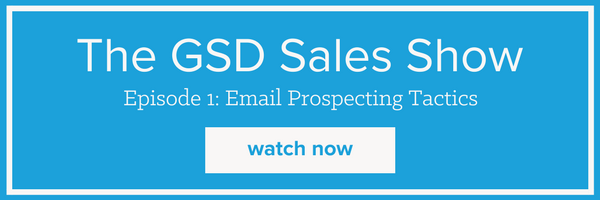You’ve spent the better part of the last hour scouring LinkedIn and your CRM for professionals with a certain job title whose companies are headquartered in your sales territory.

By 9 a.m., you’ve amassed a good-sized list of fresh accounts to target. They all seem like good fits, many of them have previously converted on your website, and now you want to get in touch with them.
You start calling down your list, but very few prospects pick up, so you wind up leaving a bunch of voicemails instead of having real conversations. Because you understand the value of following up, you send a follow-up email after each call. You briefly recap what you said on your voicemail and ask for the next 15 minutes your prospect’s got.
You’re golden. Right?
Not quite.
Many salespeople prefer speaking over the phone to exchanging prospecting emails, but they forget that buyers often have different communication preferences than salespeople. And even if your buyers are phone people, you may not have proven enough value to get a time on their calendar.
In sales, you should never bury the lede. This doesn’t mean you start pitching the first time you speak with a buyer, but never wait to demonstrate exactly what they’ll get out of speaking with you. Ironically, slowing down a sales relationship might ultimately prove a more fruitful strategy: If you take the time to help your buyer in a non-pushy way before asking them for something, you’ll have an easier time getting buy-in when you do ask for a meeting or a call.
So how do you start demonstrating that value from day one? Whether you’re calling on an inbound lead or a previously unengaged good-fit company, use any of these 16 soundbites below to get a substantive conversation going -- without ever asking for a call.
If they downloaded content/viewed a blog post on your website:
- What were you looking for when you found this piece of content?
- Why were you interested in this piece of content?
- Have you read it? What did you think?
- Did it help answer your questions, or are there areas I can help with?
- How is this content relevant to your objectives?
- Is this content related to any of your current projects?
- What strategies are you using to tackle those projects?
- Did this content change the way you think about those strategies? How? (Or why not?)
If you haven’t spoken with the prospect before:
- I saw [recent news event about prospect’s company] -- congratulations!
- I noticed your tweet/LinkedIn post/blog post about [problem]. I think I can help -- how do you currently approach [problem]?
- I was impressed by [recent blog post] I read on your blog. I wanted to follow up and send you this article I think is an interesting take on the issue.
- I help companies like yours achieve [value proposition]. Is this currently a priority for you?
- My role at [company] is to help businesses like yours achieve [value proposition].
I did some research on your company, and I noticed [weaknesses related to your product]. Have you tried X or Y in the past? - We recently completed a study on [area relevant to prospect’s concerns], and wanted to share [relevant insight]. How does [prospect’s company] currently approach this area?
- I just worked with [company similar to prospect’s] on solving [common industry problem] by doing X. Have you tried anything similar in the past?
How do you start conversations with prospects? Let us know in the comments below.



![How to Find Almost Anyone’s Email Address, Without Being Creepy [+Expert Tips]](https://www.hubspot.com/hubfs/132_Find%20Email%20Address.jpg)






